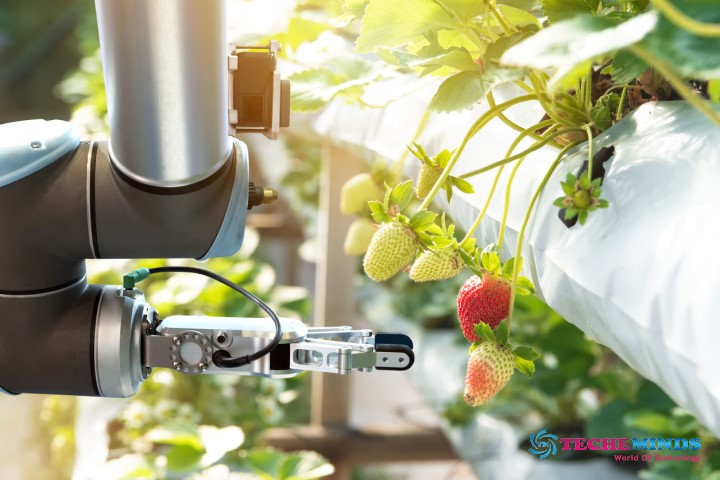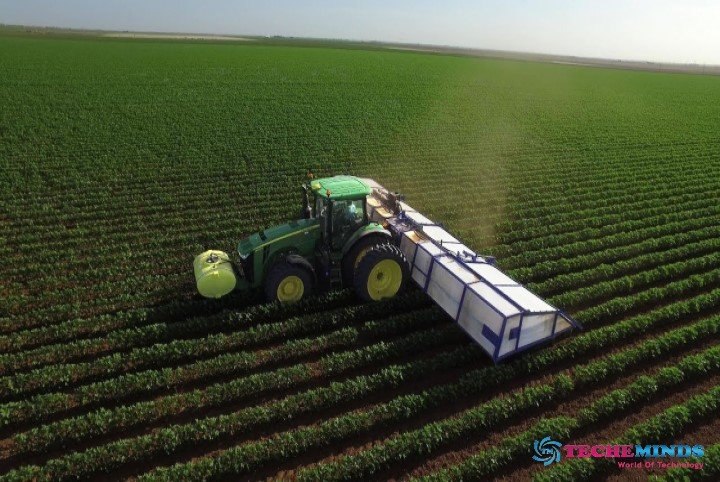Agricultural Robotics 4.0- The Future Of Farming Technology

We define an agricultural robotics as a robotic machine or device intended to perform work within the agricultural sector. Traditionally, robots have been used during the manufacturing process of products, but for a couple of decades, innovative solutions for the so–called agriculture 4.0 are being investigated.
Table of Contents
What is Agricultural Robotics for?
The main objective of agricultural robotics is to increase the productivity of crops and their optimization, as well as reduce production costs and the environmental impact on the environment.
Examples of agricultural robotics 2020
- Robot Angus harvests vegetables sustainably
- A former Google engineer has patented a robot that aims to revolutionize greenhouses. Through
- Angus it has developed a harvesting process focused on a sustainable and ecological model.
- The Angus robot is a robot for agriculture
The robot minimizes and manages the water resources that are used through an automated hydroponic system.
Characteristics of agricultural robotics
One of the fundamental aspects of these automated machines is that they are collaborative robots capable of adapting both to the environment and to the objects that surround them. Virtually all of them are autonomous industrial robots in their processes and movements.
There are some that are for working outdoors and indoors, as well as robots for working from the air and from the ground. Usually they usually incorporate other technologies, such as Artificial Intelligence and Artificial Vision.
History and evolution of agricultural robotics
Traditionally they have been machines that have been in charge of carrying out very elementary automated tasks, such as irrigating crops and spraying. One of these pioneering robots was a robotic device called Fitorobot, which was very well received in the sector. It was created in the early s. XXI by Cadia’s Almería EBT and was used to work in greenhouses.
Mainly he was dedicated to spraying with phytosanitary ware or as support in the logistics and material storage work in his work environment.
Future of robots in agriculture
Today, according to the International Federation of Robots (IFR), the rapid development and research of agricultural robots has led it to be the second best-selling type of robot on the market. The best sellers according to said study are robots for security and defense.
Today we have solutions with which to carry out logistical support in warehouses, pest and weed control, just as the Dick robot does. They can be ground or aerial work, as well as harvesting crops through a careful selection of the product and its state of maturation, etc …
Since 2016, registered projects and patents for agricultural robotics have multiplied by 5, which is a true indication of the boom and potential of this sector. These projects require powerful investments for their development, so their implementation will depend on them to make them a reality within Agriculture 4.0.
Currently, the countries that invest the most in automating production processes in the field are China, the United States, Australia, France and Spain.

What is Precision Agriculture 4.0?
When we talk about precision agriculture we refer to the permanent and exhaustive control of the factors and variables that condition the harvests.
It mainly focuses on analyzing environmental and climatological issues, irrigation efficiency, or the state of ripening of crops. In this last point we have significant advances, thanks to technologies such as Machine Vision, capable of checking, analyzing and making a decision in fractions of a second.
Benefits and advantages of agricultural robotics
As is the case with industrial robots, there are many advantages offered by the implantation of robots in agriculture. Among them we can highlight how they allow precision work while optimizing processes.
Among its main advantages we find:
- Perform drought and pest control.
- Efficiency in irrigation and herbicide use.
- Being able to work 24 hours a day, 365 days a year.
- Make up for the lack of skilled labor.
- Increase crop production.
- Fight the sustainability of intensive crops.
We must remember that at Expo Milano 2015, a large number of international countries agreed to increase food production by 60-70% by 2050.
Types of agricultural robots
We could divide agricultural robots 4.0 by their capacity, their shape or the technology they use, however we are going to do it around the environment in which they work, that is, ground and air robots.
Agricultural land robots
They are robots that can work both inside a greenhouse and in cultivated fields. Their objective, as we have already listed above, can be very varied, although most often they are intended to carry out collection or reconnaissance work on the land.
Aerial agricultural robotics
In recent years, giant steps have been taken in the development of robotic solutions with which to monitor a harvest and the land itself from the area. For this, drones and machines capable of taking information from crops from the air, either through photos, videos or collecting data, are used. Their applications are many, since they are even capable of carrying out herbicide treatments in a more precise and selective way.
The research and development of the different types of robots is undoubtedly becoming more sophisticated, and although it is far from being similar to space robots and explorer robots, their capacity makes them a tool that will soon disappear to become irreplaceable in the agricultural sector.
Also read: Bricks That Become Batteries- Nano Technology In Construction
